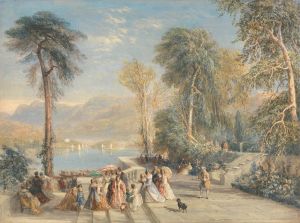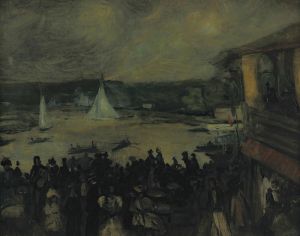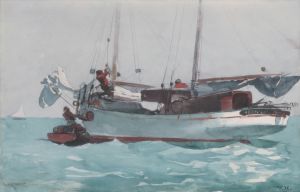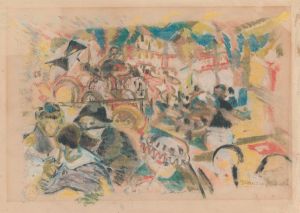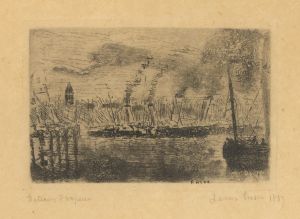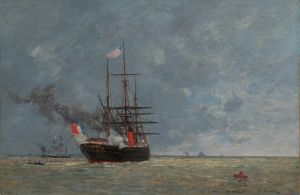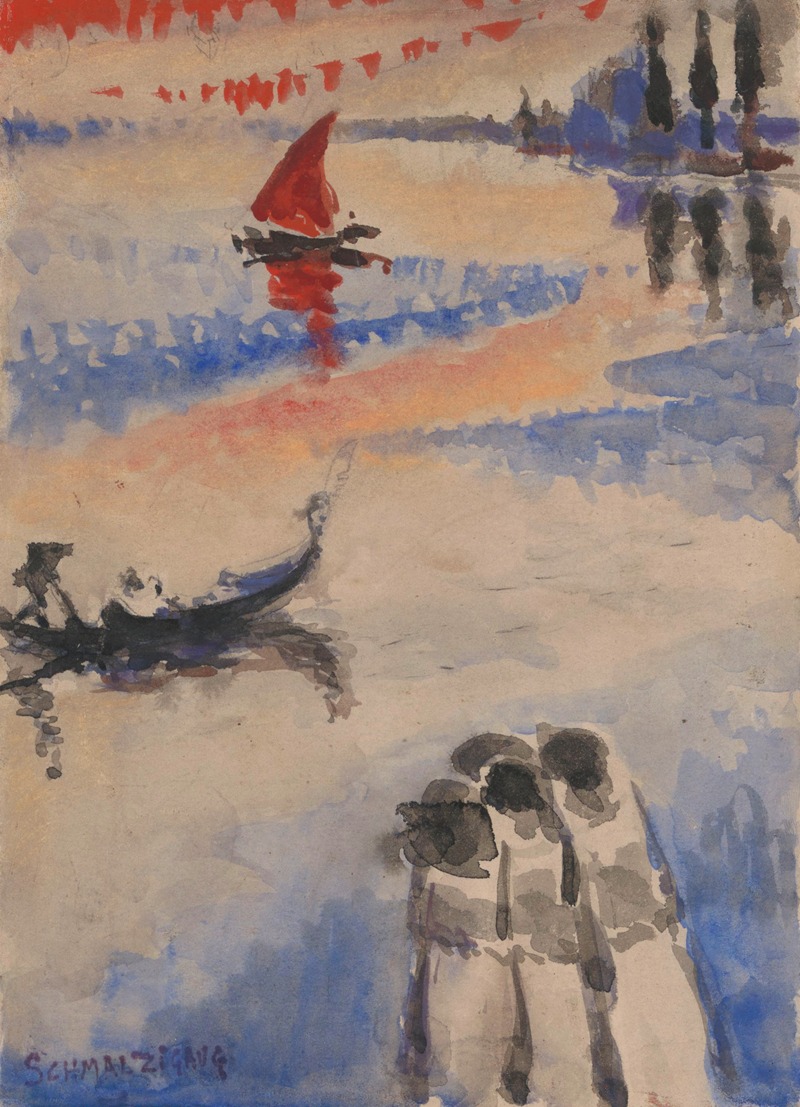
Red Sailing Ship and Gondola
A hand-painted replica of Jules Schmalzigaug’s masterpiece Red Sailing Ship and Gondola, meticulously crafted by professional artists to capture the true essence of the original. Each piece is created with museum-quality canvas and rare mineral pigments, carefully painted by experienced artists with delicate brushstrokes and rich, layered colors to perfectly recreate the texture of the original artwork. Unlike machine-printed reproductions, this hand-painted version brings the painting to life, infused with the artist’s emotions and skill in every stroke. Whether for personal collection or home decoration, it instantly elevates the artistic atmosphere of any space.
Jules Schmalzigaug was a Belgian painter associated with the Futurist movement, known for his dynamic compositions and vibrant use of color. Born in Antwerp in 1882, Schmalzigaug initially studied law but soon shifted his focus to art, studying in Paris and later in Germany. His exposure to the avant-garde movements of the early 20th century, particularly Futurism, significantly influenced his artistic style.
Futurism, an artistic and social movement that originated in Italy in the early 20th century, emphasized themes of speed, technology, youth, and violence, and sought to capture the dynamism of the modern world. Schmalzigaug was one of the few non-Italian artists to be closely associated with this movement. His works often reflect the Futurist fascination with movement and the depiction of light and energy.
"Red Sailing Ship and Gondola" is one of Schmalzigaug's notable works, showcasing his mastery in capturing movement and light. The painting is characterized by its vivid colors and dynamic composition, elements that are hallmarks of Schmalzigaug's style and the Futurist movement. The use of red in the sailing ship suggests a sense of urgency and energy, while the inclusion of a gondola introduces a contrast between the traditional and the modern, a theme often explored in Futurist art.
The painting reflects Schmalzigaug's interest in the interplay of light and color, a technique he developed during his time in Paris and later refined in Italy. His approach often involved breaking down light into its constituent colors, creating a sense of movement and fluidity. This technique is evident in "Red Sailing Ship and Gondola," where the interplay of colors creates a vibrant and dynamic scene.
Schmalzigaug's work is also notable for its abstraction, a departure from the more representational art of his predecessors. In "Red Sailing Ship and Gondola," the forms are not strictly defined, allowing the viewer's eye to move freely across the canvas, guided by the flow of colors and shapes. This abstraction is a key element of Futurist art, which sought to break away from traditional artistic conventions and embrace the new and the innovative.
Despite his contributions to the Futurist movement, Schmalzigaug's career was tragically short. He died in 1917 at the age of 35, leaving behind a relatively small body of work. However, his paintings, including "Red Sailing Ship and Gondola," continue to be celebrated for their innovative use of color and form, and their ability to capture the energy and dynamism of the early 20th century.
Today, Schmalzigaug's work is recognized as an important part of the Futurist movement and the broader history of modern art. His paintings are held in various collections, and his influence can be seen in the work of later artists who continued to explore the themes of movement and abstraction. "Red Sailing Ship and Gondola" remains a testament to Schmalzigaug's artistic vision and his ability to convey the excitement and energy of the modern world through his art.







